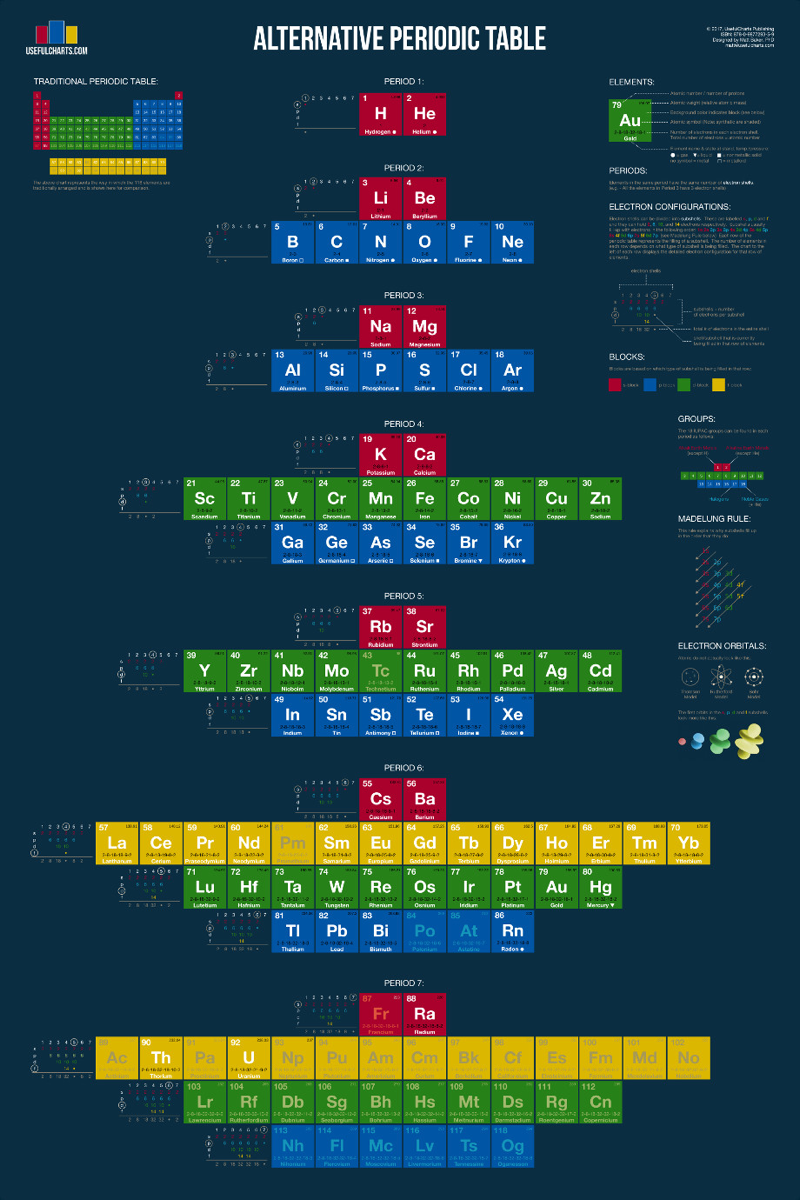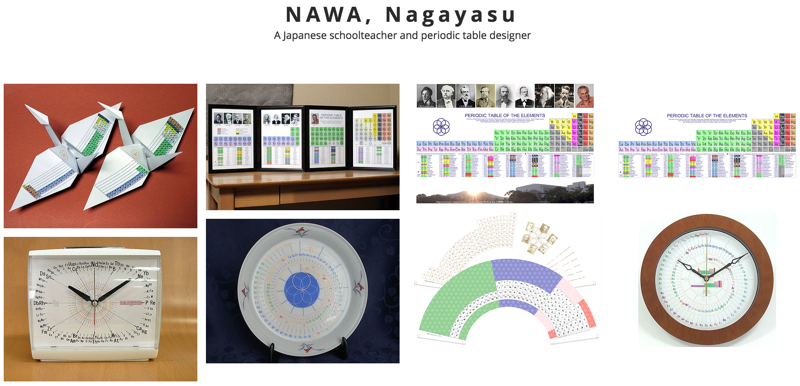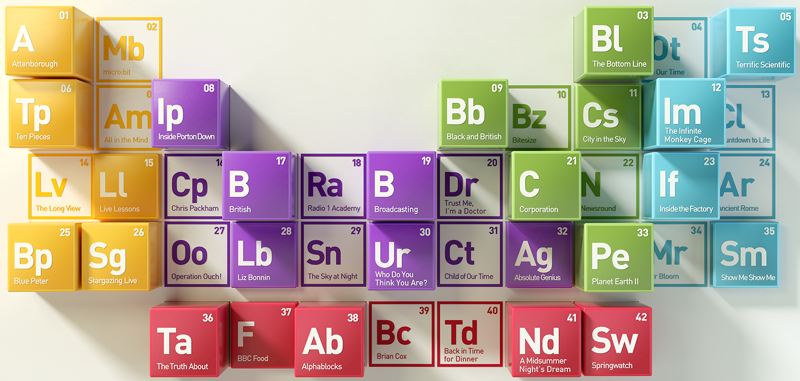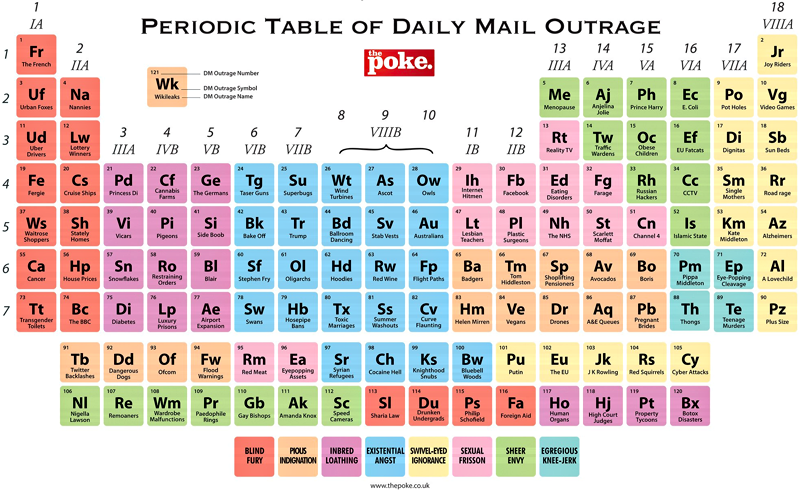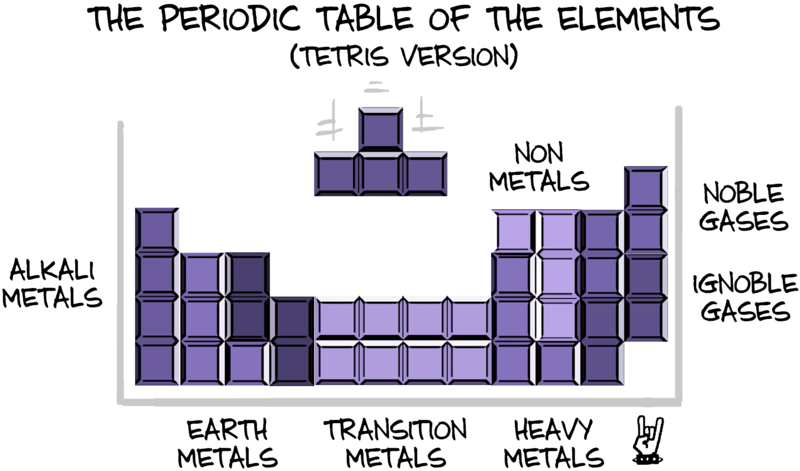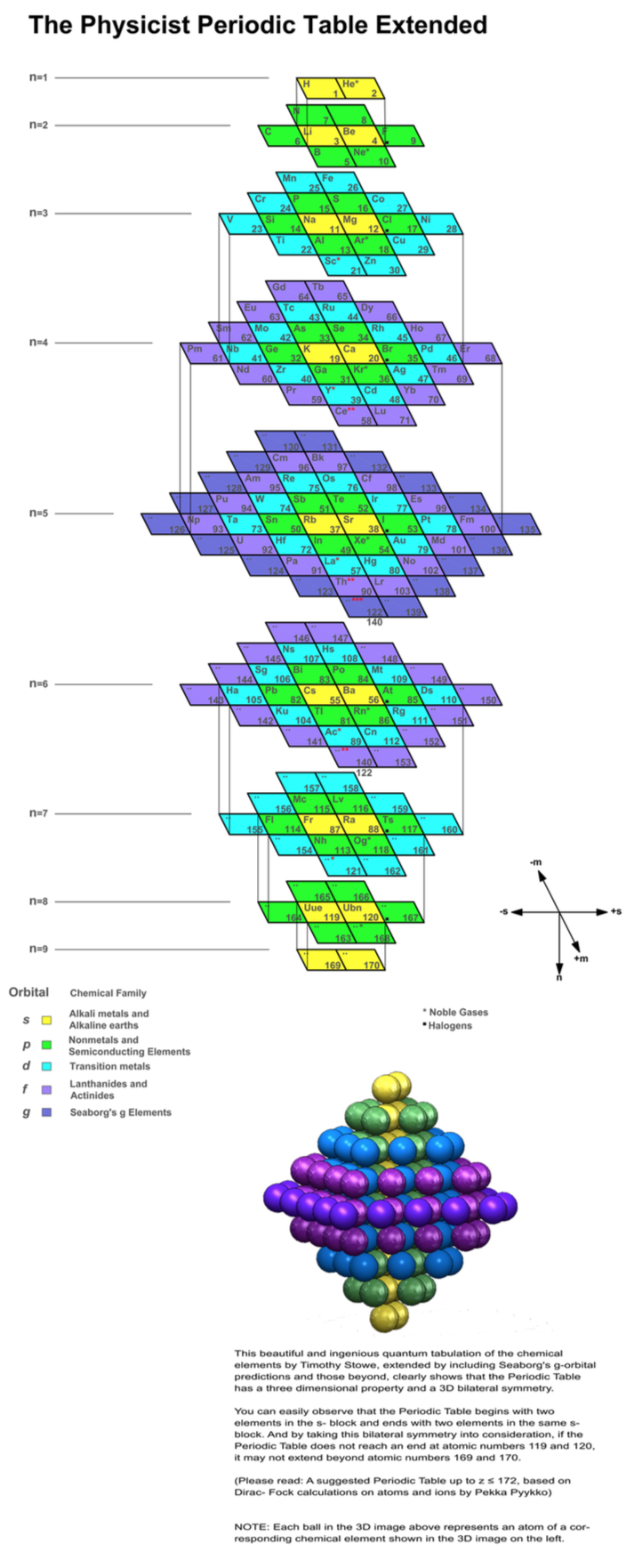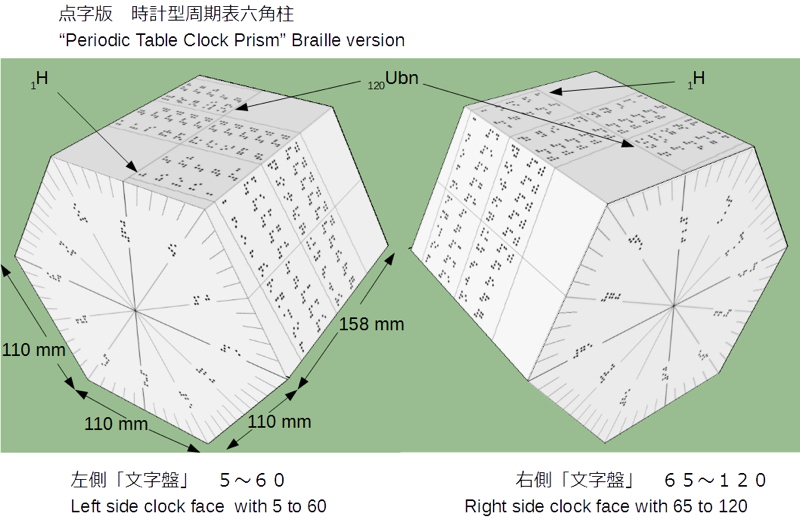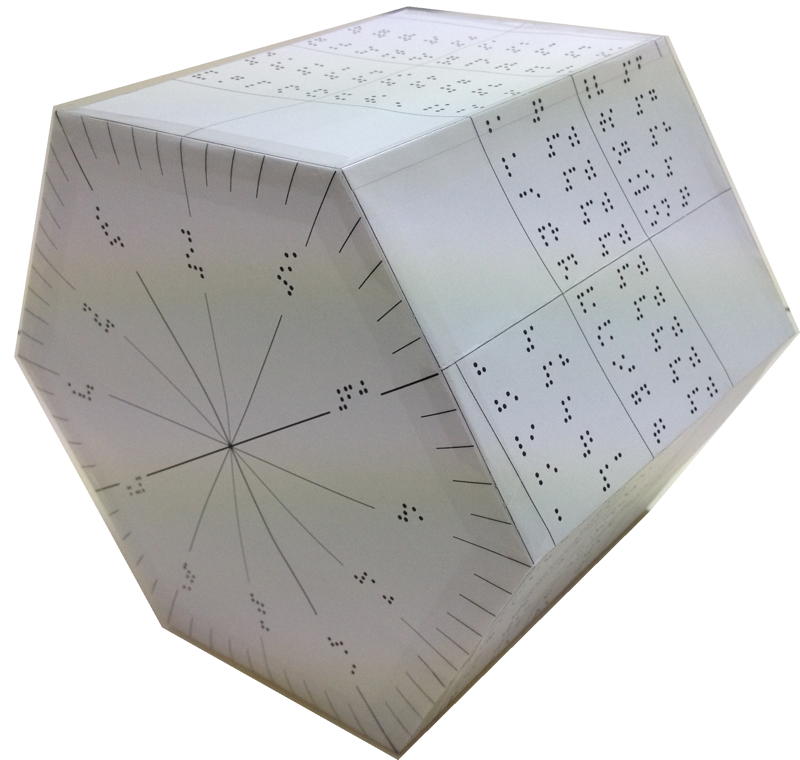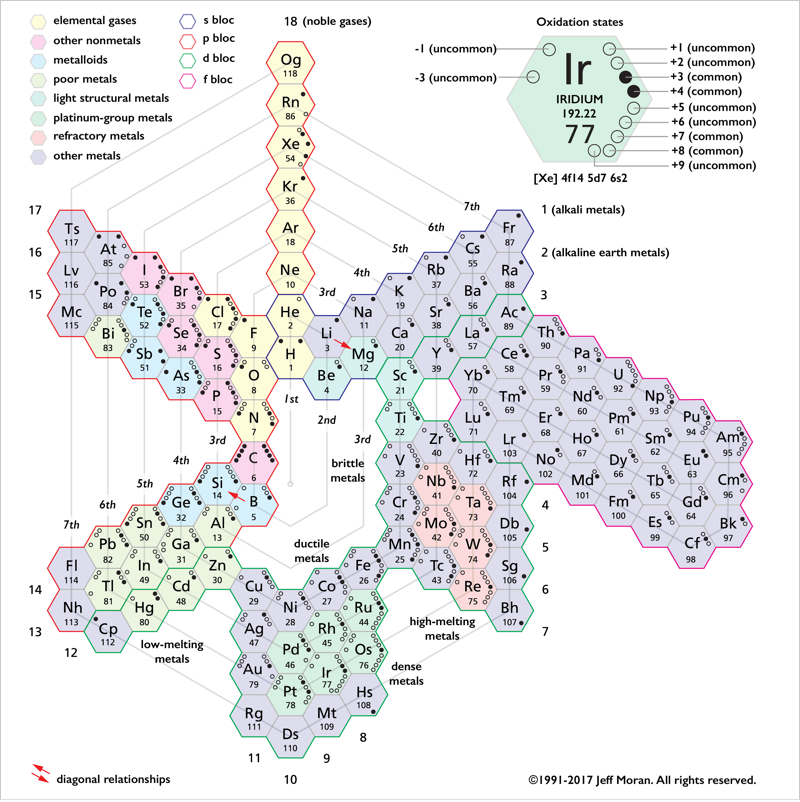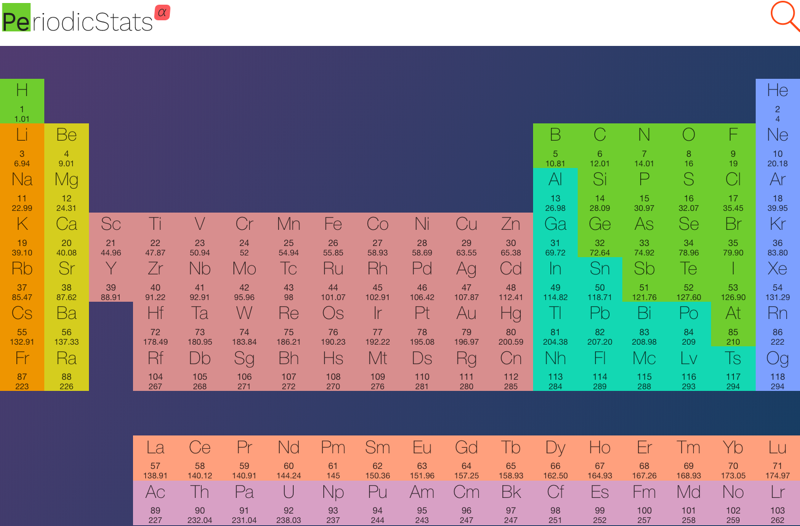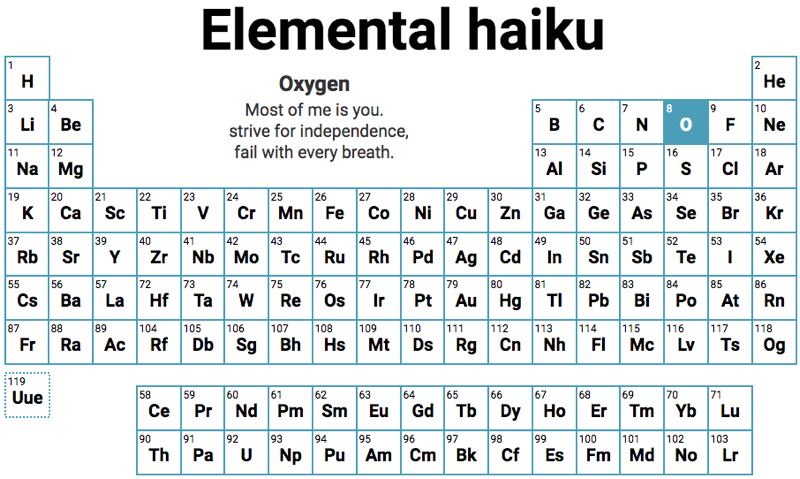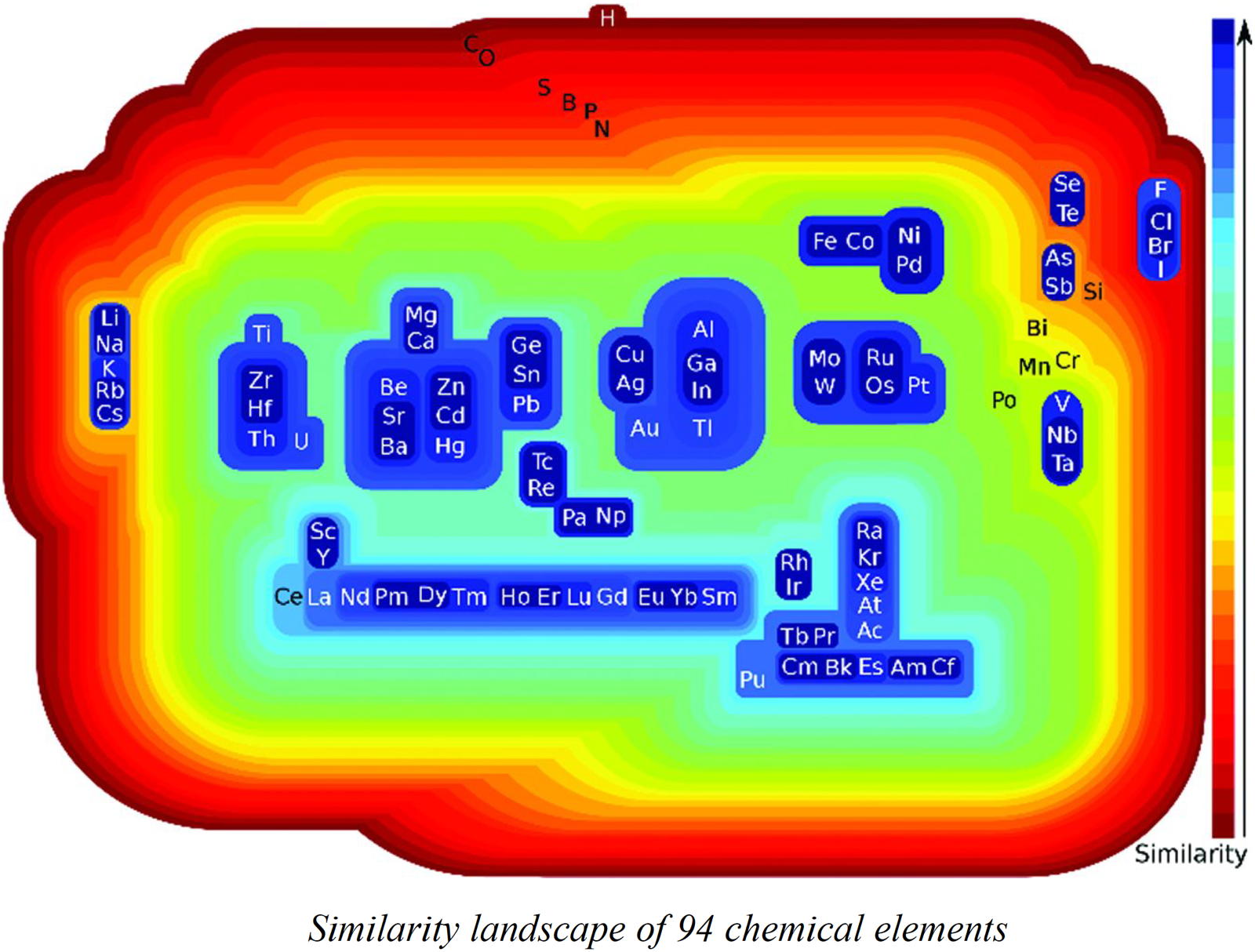Periodic Table |
 |
 |
 |
 |
 |
 |
 |
| What is the Periodic Table Showing? | Periodicity |
The INTERNET Database of Periodic Tables
There are thousands of periodic tables in web space, but this is the only comprehensive database of periodic tables & periodic system formulations. If you know of an interesting periodic table that is missing, please contact the database curator: Mark R. Leach Ph.D.
Use the drop menus below to search & select from the more than 1300 Period Tables in the database:
- SEARCH:
- By Decade
- By Type
-
Pre-Selected
Best Four Periodic Tables for Data All Periodic Tables by Name All Periodic Tables by Date All Periodic Tables by Reverse Date All Periodic Tables, as Added to the Database All Periodic Tables, reverse as Added Elements by Name Elements by Date Discovered Search for: Mendeleev/Mendeléeff Search for: Janet/Left-Step Search for: Eric Scerri Search for: Mark Leach Search for: René Vernon Search for: Electronegativity
-
By Year
2025 2024 2023 2022 2021 2020 2019 2018 2017 2016 2015 2014 2013 2012 2011 2010 2009 2008 2007 2006 2005 2004 2003 2002 2001 2000 1999 1998 1997 1996 1995 1994 1993 1992 1991 1990 1989 1988 1987 1986 1985 1984 1983 1982 1981 1980 1979 1978 1977 1976 1975 1974 1973 1972 1971 1970 1969 1968 1967 1966 1965 1964 1963 1962 1961 1960 1959 1958 1957 1956 1955 1954 1953 1952 1951 1950 1949 1948 1947 1946 1945 1944 1943 1942 1941 1940 1939 1938 1937 1936 1935 1934 1933 1932 1931 1930 1929 1928 1927 1926 1925 1924 1923 1922 1921 1920 1919 1918 1917 1916 1915 1914 1913 1912 1911 1910 1909 1908 1907 1906 1905 1904 1903 1902 1901 1900 1899 1898 1897 1896 1895 1894 1893 1892 1891 1890 1889 1888 1887 1886 1885 1884 1883 1882 1881 1880 1879 1878 1877 1876 1875 1874 1873 1872 1871 1870 1869 1868 1867 1866 1865 1864 1863 1862 1861 1860 1859 1858 1857 1856 1855 1854 1853 1852 1851 1850 1844 1843 1842 1838 1836 1831 1830 1829 1825 1824 1817 1814 1813 1811 1808 1807 1804 1803 1802 1801 1800 1798 1794 1791 1789 1787 1783 1782 1781 1778 1775 1774 1772 1771 1766 1753 1751 1748 1735 1718 1700 1690 1687 1682 1671 1669 1624 1617 1520 1000 -300 -450 -800 -1000 -2000 -3500 -3750 -5000 -6000 -7000 -9000
Periodic Tables from the year 2017:
| Year: 2017 | PT id = 739, Type = formulation |
Alternative Periodic Table
From Useful Charts:
You'll notice that this periodic table looks quite a bit different from the one you're used to. The traditional periodic table is designed to emphasize the concept of valence, which is important for knowing which elements can easily combine with others to form compounds. In contrast, the periodic table below is designed to simply emphasize the way in which atoms are "built" (specifically, how electrons group together into shells and subshells).
It's based on a design proposed by Edward Mazurs in the 1960s. Like the traditional table, this alternative version can be used to find an elements name, number, atomic weight, state of matter, period, group, and block. However, it also contains detailed information on electron configurations and the different types of electron subshells.
| Year: 2017 | PT id = 741, Type = formulation |
New Rendering of ADOMAH Periodic Table
From Valery Tsimmerman, of the PerfectPeriodicTable.com and the ADOMAH Periodic Table:
"I received email from Dr. Marcus Wolf who is a chemist, working on renewable energy and electrochemical storage in Germany, near Nuremberg. He also lectures at Georg Simon Ohm, Technische Hochschule Nürnberg. Attached to his email was new version of ADOMAH Periodic Table that he created. In this new rendering he is using Jensen's Valence Manifold (VM)."
This is what Dr. Marcus Wolf wrote:
"The first one to come up with the idea of using a valence manifold VM = [e + v] as a label for the groups, was Will B. Jensen. He derived it from the very early attempts of Richard Abegg, who, at around 1904, brought up the hypothesis of 'main- and counter-valences', derived from the observable behavior of elements and their compounds in electrochemical experiments. Eric Scerri is citing Jensen in his latest book, in the chapter about Richard Abegg. But Jensen's proper article from 1983 or so is far more detailed and in his later publications he then introduces the valence manifold concept. Last weekend I accidentally observed another consistency between the G-values and their ordering and the valence electron counts, e. If you fix the e value of the starting group in a given l-block as e(initial), you could generate every G-number of a given group by adding the valence vacancy count, v, to it:
G = e(initial) + v.
"That is another hint for the consistency of the VM labelling concept."

| Year: 2017 | PT id = 745, Type = misc |
Venn Diagram of the Chemical Elements and the United States
A rather nice Venn diagram showing the intersection of the chemical element symbols and the States of the Union (based on an origional found at I Love Charts):
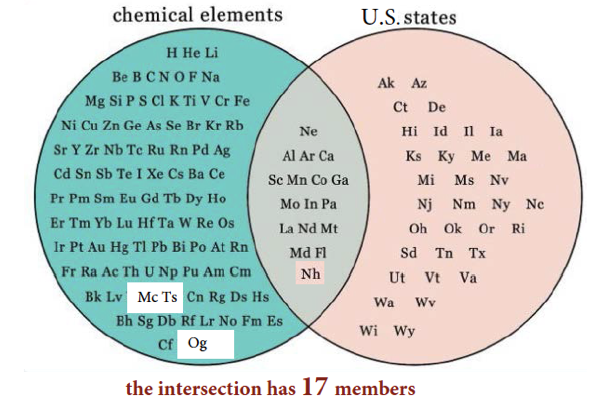
Thanks to Eric Scerri for the tip!
See the website EricScerri.com and Eric's Twitter Feed
| Year: 2017 | PT id = 747, Type = formulation |
NAWA Periodic Tables
Nagayasu Nawa - "A Japanese school teacher and periodic table designer" - has a home page showing all his designs:
| Year: 2017 | PT id = 750, Type = non-chem |
BBC | Every Element of Wonder Periodic Table
Y&R London team up with FLINK, represented by Independent / Indy8, to craft an ad for BBC's Every Element of Wonder campaign, highlighting its learning running across TV, radio and social media platforms.:
| Year: 2017 | PT id = 753, Type = Review |
Habashi Book: The Periodic Table & Mendeleev
By Fathi Habashi, a small book:
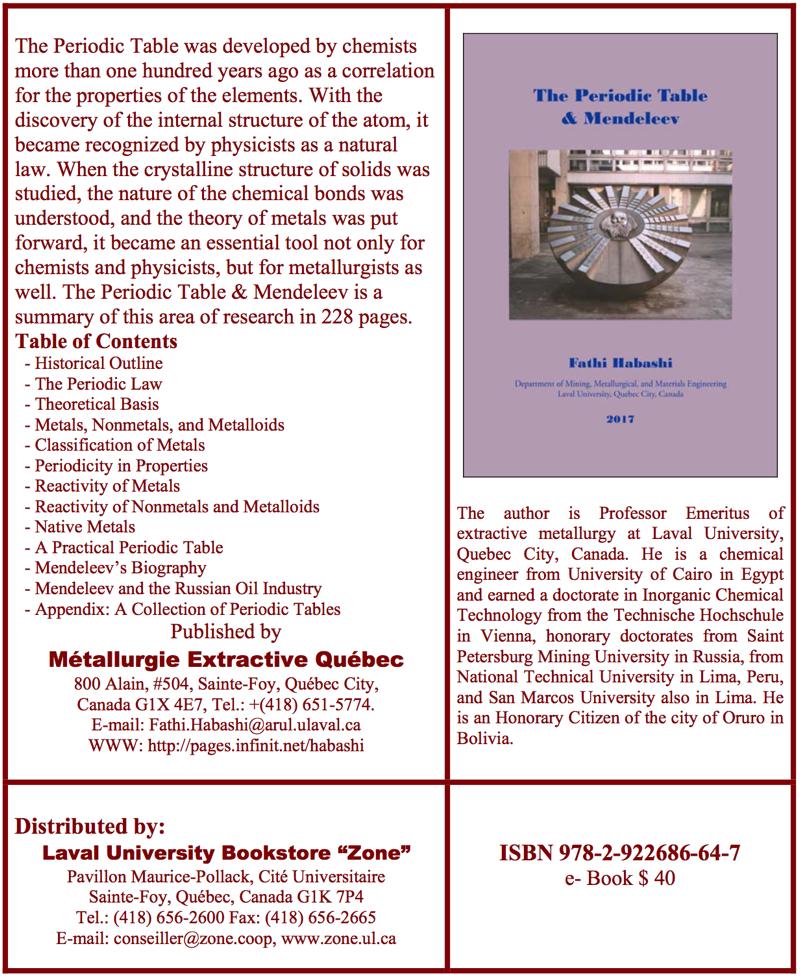
| Year: 2017 | PT id = 756, Type = non-chem |
Daily Mail Outrage, Periodic Table of
From The Poke, a Periodic Table of Daily Mail Outrage. We particularly like the groupings of Blind Fury, Pious Indignation, Inbred Loathing, Existential Angst, Swivel-Eyed Ignorance, Sexual Frisson, Sheer Envy & Egregious Knee-Jerk.
T-shirt, poster & Tea Towel versions are available. Click here for the large version:
Thanks to Marcus Lynch for the tip!
| Year: 2017 | PT id = 758, Type = misc |
Tetris Version of the Periodic Table
From a Piled Higher and Deeper [Ph.D. Comics] video, here, a Tetris version of the Periodic Table:
| Year: 2017 | PT id = 759, Type = formulation 3D |
Stowe's A Physicist's Periodic Table UPDATED
Stowe's 'A Physicist's Periodic Table' was published in 1989, and is a famous & well respected formulation of the periodic table.
Since 1989 quite a number of elements have been discovered and Jeries A. Rihani has produced an updated and extended version. Click here to see the full size .pdf version:
| Year: 2017 | PT id = 760, Type = formulation 3d misc |
Clock Prism Periodic Table, Braille Version
From the prolific Nagayasu Nawa, a Braille version of the Clock Prism periodic table:
| Year: 2017 | PT id = 761, Type = formulation 3D |
Stewart's Chemosphere
P J Stewart, a good friend of the periodic table database, has mapped a PT onto a sphere.
PJS writes: "It is Janet Rajeuni 2014 wrapped round a sphere, going back to Mazurs 1965, and Tsimmerman 2006. Arabic numerals indicate shells (values of principal quantum number); Roman numerals indicate periods."
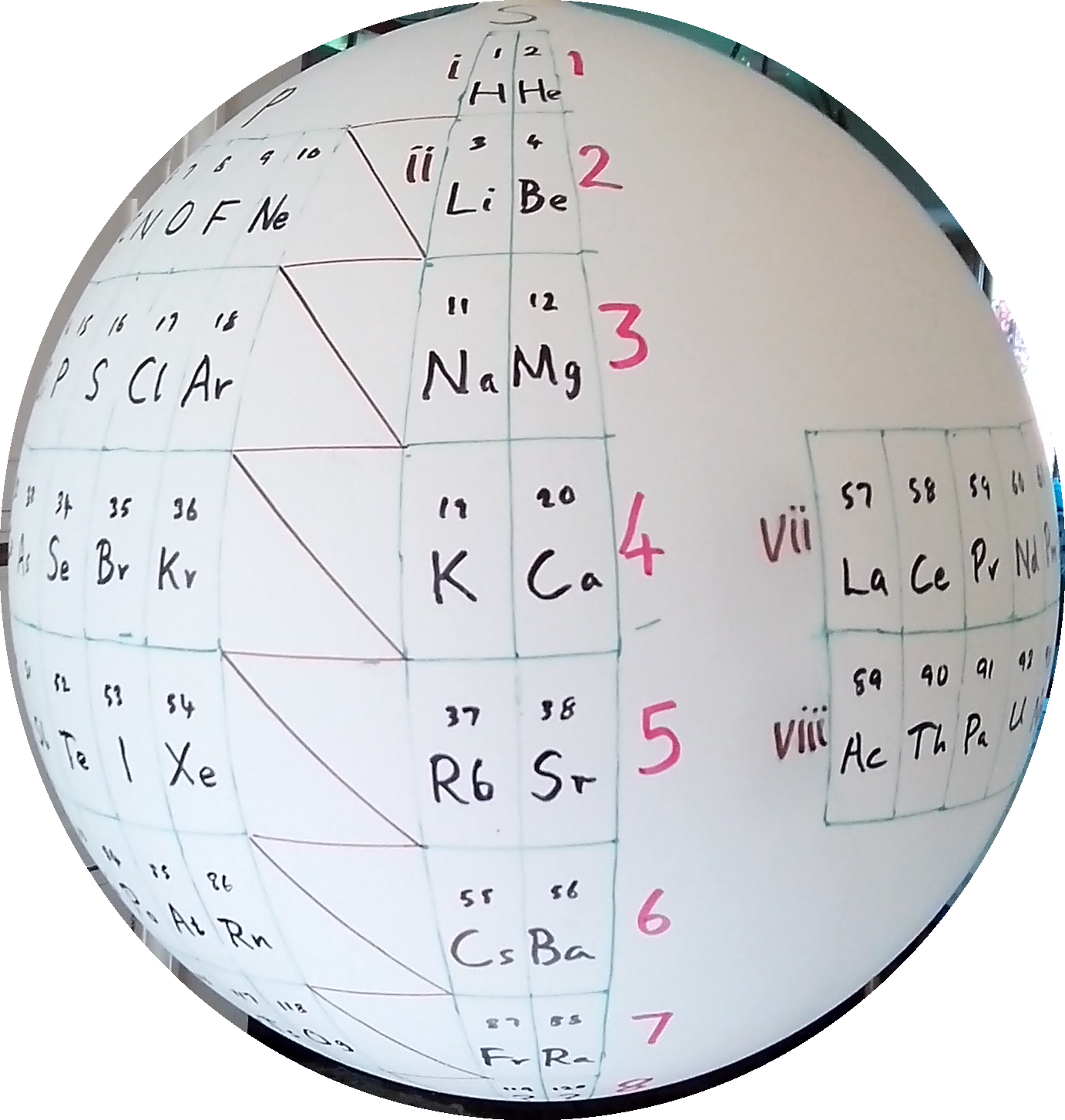
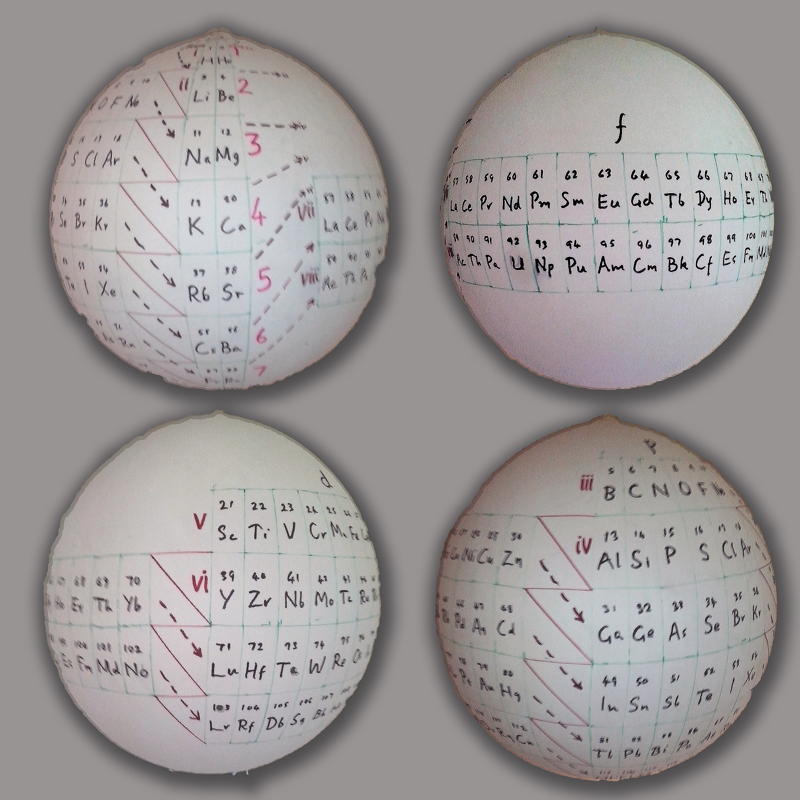
| Year: 2017 | PT id = 764, Type = formulation spiral |
Moran's Periodic Spiral (Updated)
Jeff Moran has updated his 1999 Periodic Spiral.
Click here for a larger version.
Jeff says: I offer the attached spiral formulation as a way of expressing the relationships of the f and d blocs to group 3:
- La and Ac are assigned to the Ln and An series, respectively
- The f block series is within, though apart from, the d block
- The group 3-ish relationship of Ln and An to Sc (and, by extension, to Y) is implied
- The group 3 status of Lu and Lr is explicit
| Year: 2017 | PT id = 767, Type = data |
Technology, Periodic Table of
Go to the website and hover over the element to see how it is used in modern technology:
| Year: 2017 | PT id = 768, Type = data |
PeriodicStats
A periodic table with a minimalist design ethic, optimized for phones and tablets:
| Year: 2017 | PT id = 901, Type = formulation |
Elements Known and now Named in the Year 2017
Elements in the year 2017, now the elements 113 – 118 have been named: Nihonium (113, Nh), Flerovium (114, Fl), Moscovium (115, Mc), Livermorium (116, Lv), Tennessine (117, Ts) & Oganesson (118, Og) have been named.
Taken from this Wikipedia page:
| Year: 2017 | PT id = 904, Type = misc |
Haiku, Elemental
By Mary Soon Lee, a review of the Periodic Table composed of 119 science haiku, one for each element, plus a closing haiku for element 119 (not yet synthesized). The haiku encompass astronomy, biology, chemistry, history, physics, and a bit of whimsical flair. Click here, then hover over an element on the Periodic Table to read the haiku.
| Year: 2017 | PT id = 916, Type = misc |
Atomic Nuclei Periodic Table
From the Pyramids on Nuclei of Elements blog, a periodic table of atomic nuclei using 'pyramidal cube theory':

Click image below (updated in 2020) to enlarge:

| Year: 2017 | PT id = 917, Type = formulation 3d spiral |
Kurushkin's Spiral Periodic Table
Mikhail Kurushkin has a way of constructing the standard long form periodic table from the Janet Left-Step formulation.
Mikhail writes in his J.Chem.Educ paper DOI: 10.1021/acs.jchemed.7b00242; J. Chem. Educ. 2017, 94, 976?979
"Addition of another s-block to the left of the left-step periodic table [enables it] to be rolled into a spiral so that the left and right s-blocks are merged together and the number of elements is exactly 118. The resulting periodic table is called the "spiral" periodic table, which is the fundamental representation of periodicity":

| Year: 2017 | PT id = 939, Type = misc |
University of Murcia's Oversize Periodic Table
From C&EN:
The faculty at the University of Murcia in Spain has a giant periodic table of the elements emblazoned on the facade of the school's chemistry building.
Covering 150 m2, the table displays 118 elements identified by their symbol, atomic number, and atomic mass. "It could be the world's largest permanent periodic table placed on a wall", Pedro Lozano Rodriguez, dean of the department of chemistry at the school, tells Newscripts.
A number of local companies chipped in to place the oversize chart on the side of the building, including the energy firm Repsol, the brewer Estrella de Levante, and personal care products maker Tahe Productos Cosméticos. Lozano says the display will serve as part of an introductory chemistry lesson for incoming freshmen.
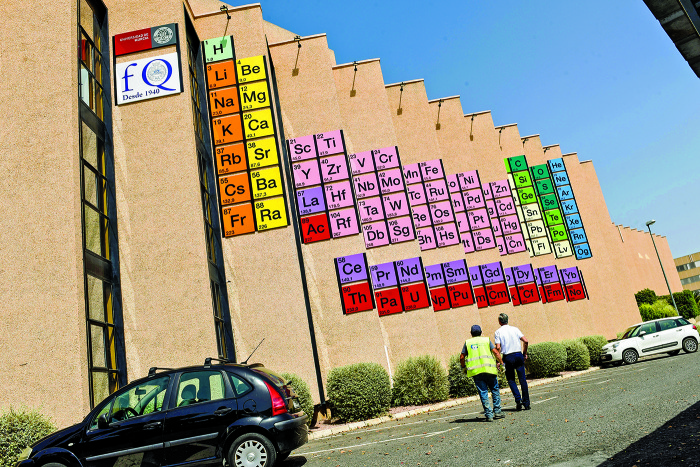
| Year: 2017 | PT id = 947, Type = review |
Gray's Wooden Periodic Table Table Video
Theo Gray collects elements and has put together this awesome Periodic Table Table. This week Reactions explores the science and chemistry going on inside this periodic table.
Step into his office at Wolfram Research, and you'll see a silicon disc engraved with Homer Simpson, a jar of mercury, uranium shells and thousands of other chemical artifacts. But his real DIY masterpiece is the world's first "periodic table table". Within this masterfully constructed table-top lay samples of nearly every element known to man, minus the super-radioactive ones.
Theo Gray is 2011 winner of the ACS Grady Stack Award for Interpreting Chemistry for the Public. The Periodic Table Table is a testament to Theo's love for chemistry -- as well as his Ebay buying habits -- and is full of fascinating stories.
| Year: 2017 | PT id = 1120, Type = formulation data review |
Restrepo's Similarity Landscape
Building Classes of Similar Chemical Elements from Binary Compounds and Their Stoichiometries by Guillermo Restrepo, Chapter 5 from: Elements Old and New: Discoveries, Developments, Challenges, and Environmental Implications p 95-110.
From the abstract:
Similarity is one of the key concepts of the periodic table, which was historically addressed by assessing the resemblance of chemical elements through that of their compounds. A contemporary approach to the similarity among elements is through quantum chemistry, based on the resemblance of the electronic properties of the atoms involved. In spite of having two approaches, the historical one has been almost abandoned and the quantum chemical oversimplified to free atoms, which are of little interest for chemistry. Here we show that a mathematical and computational historical approach yields well-known chemical similarities of chemical elements when studied through binary compounds and their stoichiometries; these similarities are also in agreement with quantum chemistry results for bound atoms. The results come from the analysis of 4,700 binary compounds of 94 chemical elements through the definition of neighbourhoods for every element that were contrasted producing similarity classes. The method detected classes of elements with different patterns on the periodic table, e.g. vertical similarities as in the alkali metals, horizontal ones as in the 4th-row platinum metals and mixed similarities as in the actinoids with some transition metals. We anticipate the methodology here presented to be a starting point for more temporal and even more detailed studies of the periodic table.
Thanks to René for the tip!
 |
 |
 |
| What is the Periodic Table Showing? | Periodicity |
© Mark R. Leach Ph.D. 1999 –
Queries, Suggestions, Bugs, Errors, Typos...
If you have any:
Queries
Comments
Suggestions
Suggestions for links
Bug, typo or grammatical error reports about this page,please contact Mark R. Leach, the author, using mark@meta-synthesis.com
This free, open access web book is an ongoing project and your input is appreciated.
